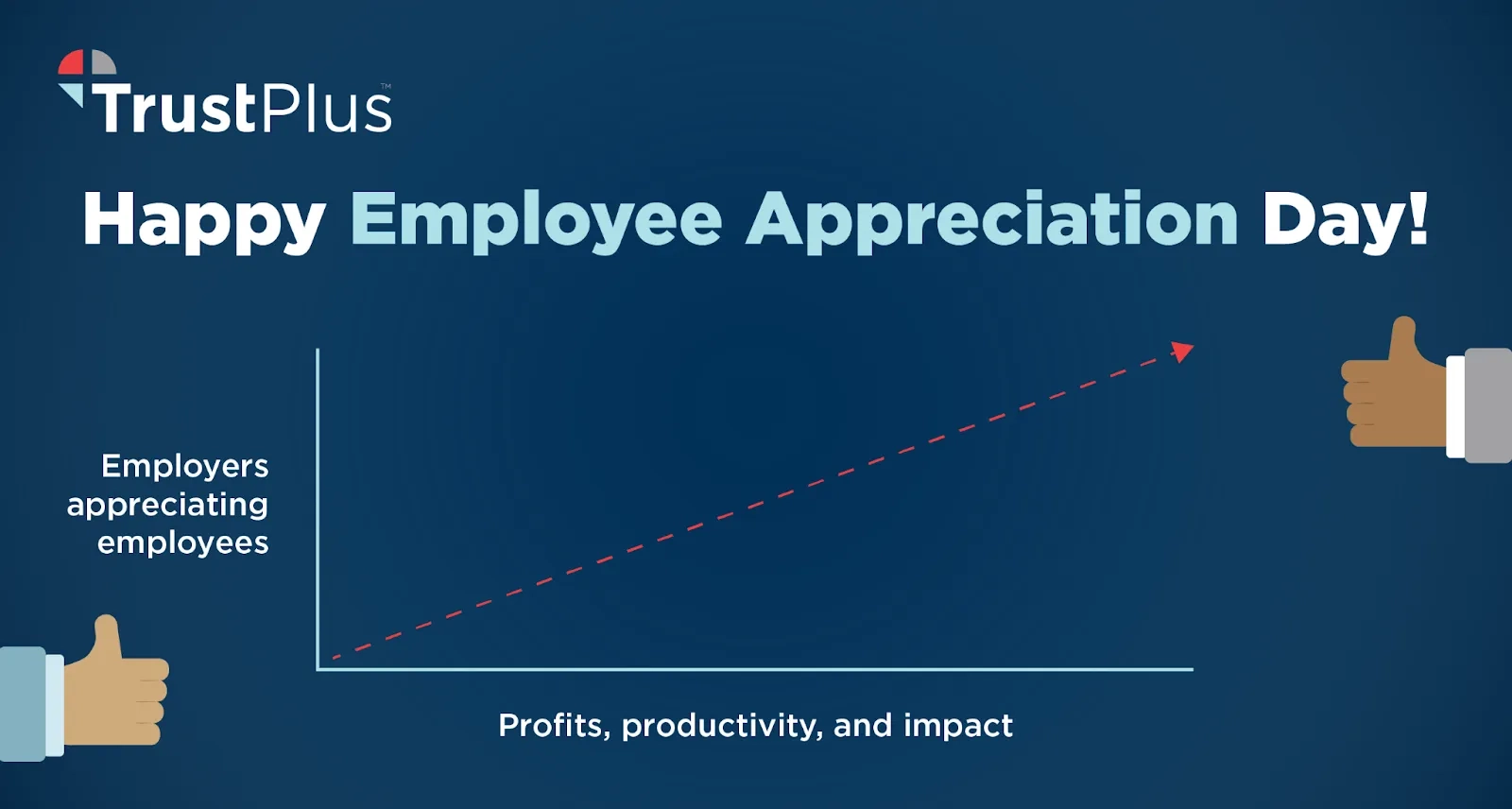Employee Appreciation Day is a good day for employers to reflect on a truth: Appreciation takes many forms, the most important of which is investing in the financial health of your workers with TrustPlus. Just kidding. Employers who are fluent in the forms and nuances of appreciation, and their workers, benefit. Up your appreciation-nuance fluency with a few key concepts.

Smart employers appreciate, and recognize, employees.
Employers, can we all agree on this one truth?
It is Employee Appreciation Day after all!
You know that nearly half of U.S. workers quit because they feel unappreciated, 65% say they work harder when their contributions are noticed by employee management, and 65% say they would even stay with an unappreciative boss if their co-workers appreciate their work.
So, appreciation plays a big role in profits, productivity, and retention (just like financial wellness benefits). Employee appreciation also takes many forms.
Employers who are fluent in their nuances, and their workers, benefit.
The coming weeks are an especially stressful time for many of your workers, as they fret about filing taxes, so some intentional appreciation efforts could go a long way toward easing stress and boosting engagement, right about now.
Up your appreciation-nuance fluency with a couple of key concepts and a few tips to make sure your appreciation efforts have the desired impact.
On appreciate employees vs. recognize employees
In “Do You Tell Your Employees You Appreciate Them?” by Jack Zenger and Joseph Folkman
in Harvard Business Review, the authors explore the difference between “appreciation” and “recognition,” spurred by their counterintuitive finding among a global sample of 12,000 people that 33% of them indicated that they dislike receiving recognition:
“For many people, “recognition” means being called out in a meeting and given public praise for something they’ve accomplished. It conjures up images of spotlights glaring on them, and they might find all that attention embarrassing. Whether because of their personality or perhaps cultural upbringing, being publicly singled out is uncomfortable for a substantial number of people. In other words, it’s the way that the recognition is delivered that they resist, not the underlying message of appreciation.”
Good to know, there’s a meaningful difference between recognize and appreciate.
Reflective recognition: A new way to appreciate employees
In “A Better Way to Recognize Your Employees,” Christopher Littlefield emphasizes why it is important for leaders to add to their appreciation toolkit “reflective recognition,” an inquiry-based approach asking individuals and groups to reflect on and share what they are proud of and why.
The reflective recognition approach overcomes a limitation to traditional approaches to praise: “leaders can only recognize what we see, observe, or learn about from others and our recognition focuses on what we appreciate, which is not always what others want to be appreciated for.”
Reflective recognition also overcomes the perennial challenge for managers of finding meaningful things for which to recognize workers on a regular basis.
Recognize employees with these tips
It’s not only what you say but how and in what context.
Be specific, about actions and outcomes
- Specifics are far more powerful than a generic “well done.” Be specific about what you’re recognizing and why, the impact it had on the team, your organization, or customers, clients, etc.
- Recognizing outcomes is valuable, but they’re often out of the control of individual workers. So, it’s important to recognize actions that lead to positive outcomes, plus they offer more frequent opportunities for appreciation, which can boost engagement and productivity.
Know your audience
- Your workforce is composed of myriad personalities with myriad preferences for receiving appreciation and/or feedback, good, bad, or otherwise.
- Some may appreciate a public call out in an all-staff meeting while others would be mortified by such a display.
- Know your audience. Add their preferences and any notes in their employee profile, as an employer resource for you in your larger efforts to develop your human capital. It’s employee management 101 in 2024.
Time is of the essence
- The sooner you give the recognition after the action or outcome you’re appreciating, the higher the perceived value by the person on the receiving end of your message.
There seems to be a general awareness of the importance of showing employees appreciation, yet many employers are leaving profits and impact on the table by not doing it more and in a systematic way.
So, this Employee Appreciation Day, remember to show some love. Your entire organization will benefit.






